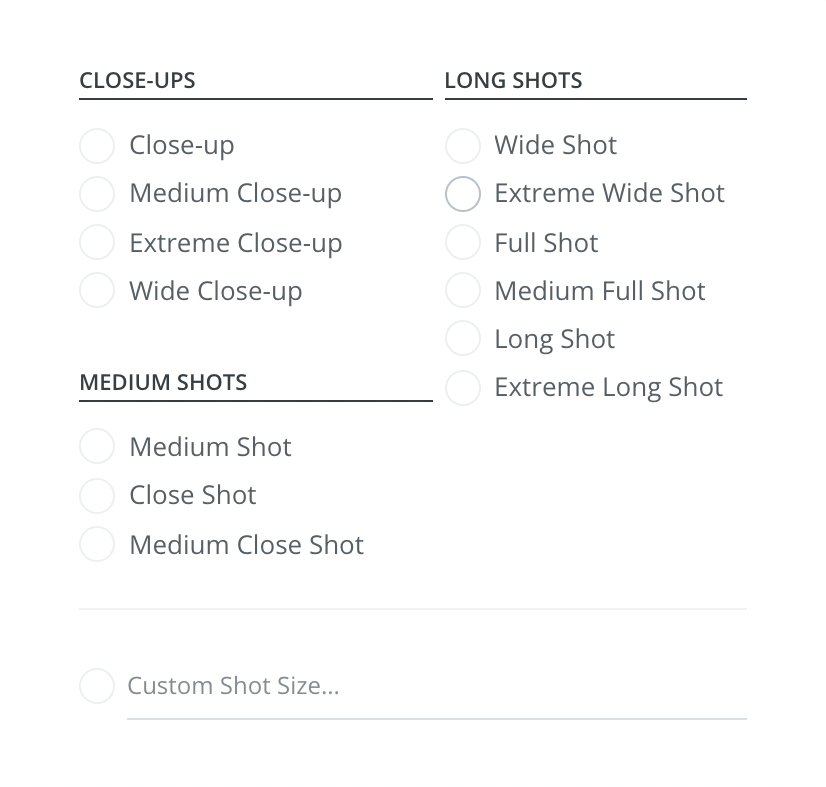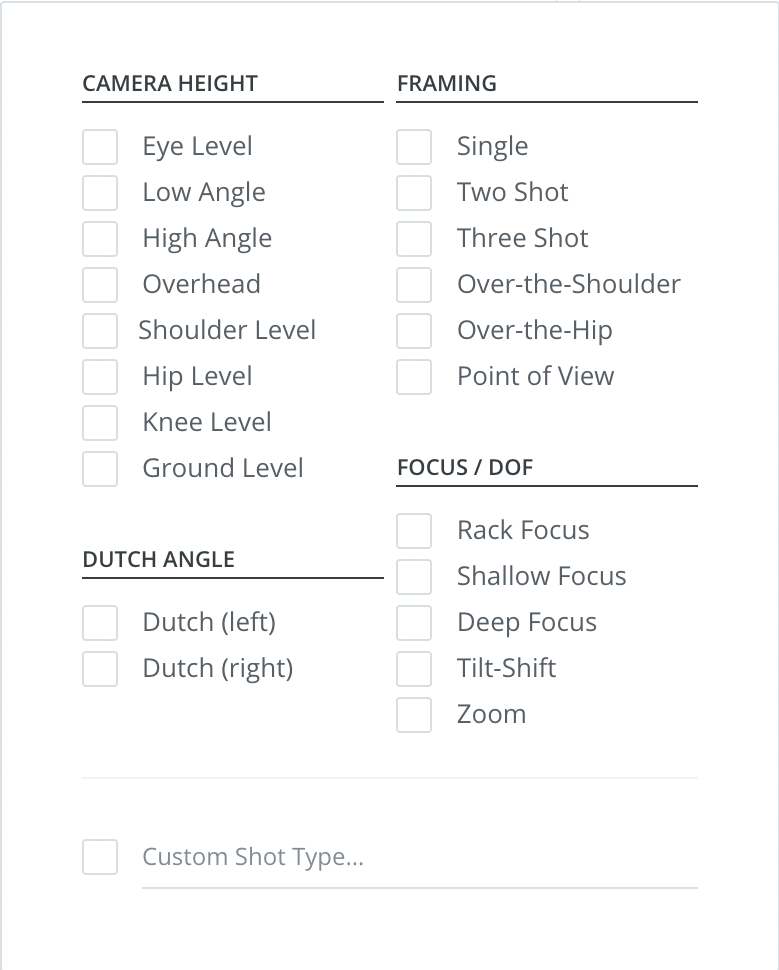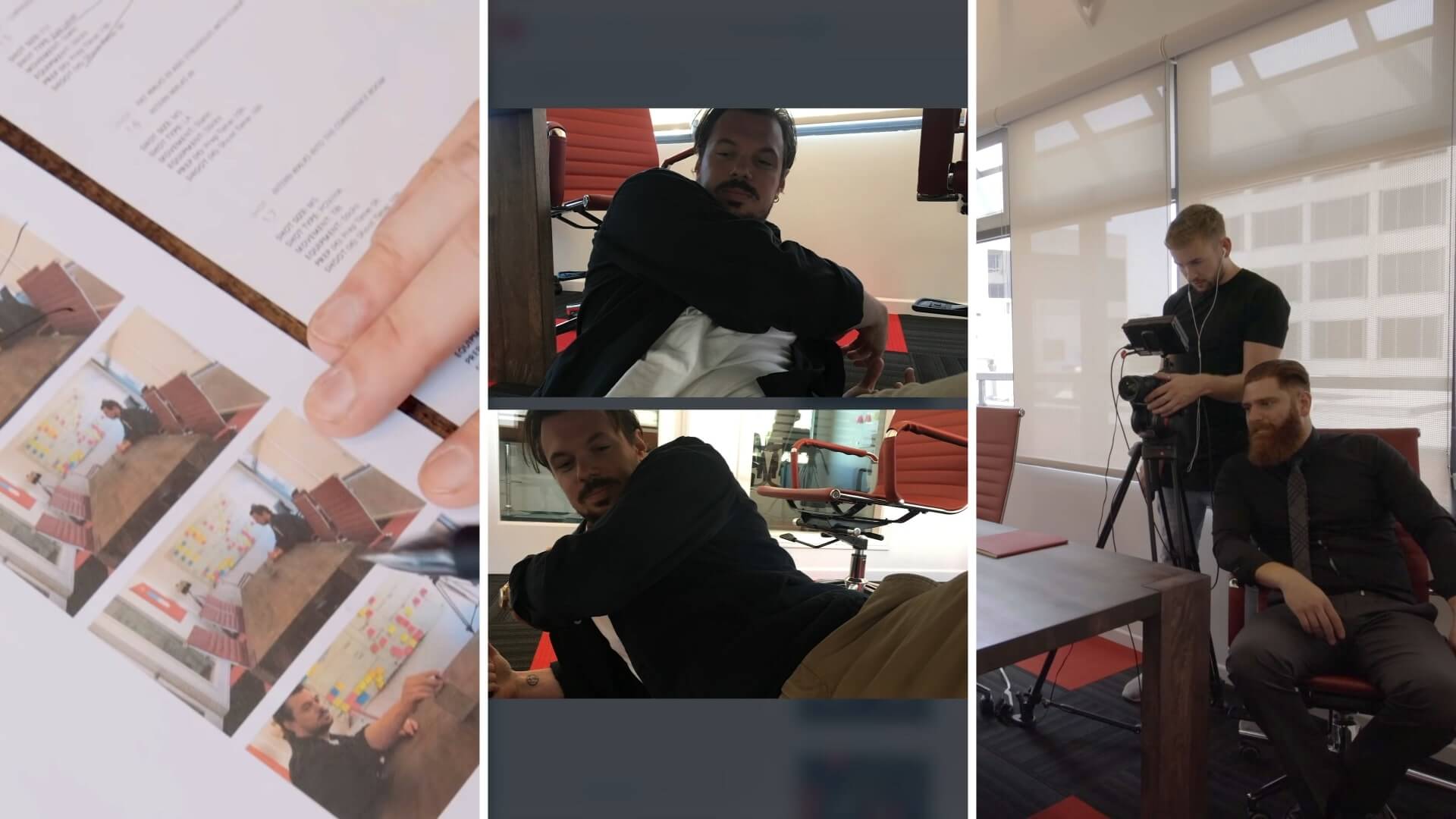Сreating a shot list can alleviate a tremendous amount of stress and pressure on actual shoot days. They can provide a clear blueprint for what needs to be shot so that you can save time. It’s important to understand all of the common shot list abbreviations used in a shot list so that you can effectively communicate your ideas to others and so that you can understand what a shot list says when the shooting days finally come.
Shot list abbreviations
Shot sizes
When using the free StudioBinder shot list software and creating a new shot, there are three different shot elements you must determine: shot size, camera angle, and camera movement.
Let’s start with the camera abbreviations for the types of shot sizes. All of the shot sizes are segmented into close-ups, medium shots, and long shots.

Shot list abbreviations • Shot sizes
To get a better understanding of every type of shot size that you can use in your shot list, check out our ultimate video guide to camera shots in which we break down every type of shot size.
Ultimate Guide to Camera Shots: Every Shot Size Explained • Subscribe on YouTube
When using these shot sizes in your shot list, it is important to abbreviate as to save space. Understanding what all shot list abbreviations means will also help you better communicate the visuals of a shot to the rest of your team.
CU: Close-up
MCU: Medium Close-up
ECU: Extreme Close-up
WCU: Wide Close-up
MS: Medium Shot
CS: Cowboy Shot
MCS: Medium Close Shot
WS: Wide Shot
EWS: Extreme Wide Shot
FS: Full Shot
MFS: Medium Full Shot
LS: Long Shot
ELS: Extreme Long Shot
Related Posts
Shot list abbreviations
Shot types
Next up, we have shot types which are determined by the camera height, angle, framing, camera focus and depth of field.

Shot list abbreviations • Shot types
Before learning about how these types of shots are abbreviated, it is important to understand what the shots look like and how they are used in film and storytelling. The first element that determines the shot type is the camera height and angle.
Here is our video that breaks down all camera angles and how they are used.
Ultimate Guide to Camera Angles: Every Camera Shot Explained • Subscribe on YouTube
The next element that determines the shot type is camera framing. To understand the different ways a shot can be framed, give our video breakdown a watch in which we cover different compositions.
Camera Framing: Camera abbreviations • Subscribe on YouTube
Now that you have a solid grasp of the different types of camera shots, let’s see how they’re abbreviated. Note that not all shot types have an abbreviation. Some shot types are simply written out, but here is a list of shot types that are commonly abbreviated.
LA: Low Angle
HA: High Angle
OTS: Over-the-Shoulder
OTH: Over-the-Hip
POV: Point of View
EST: Establishing Shot
SPFX: Special Effects
Take a look at these shot list abbreviations used in action in a shot list created in StudioBinder's Shot List and Storyboard Creator. Click the image to explore the complete storyboard.
Related Posts
UP NEXT
How to Make a Shot List
Make shot listing easy by learning how to make a shot list using StudioBinders intuitive and free shot listing software. We’ll teach you how to create a shot list that is professional, clear, and simple to create.
Up Next: Shot Listing Explained →
Showcase your vision with elegant shot lists and storyboards.
Create robust and customizable shot lists. Upload images to make storyboards and slideshows.

